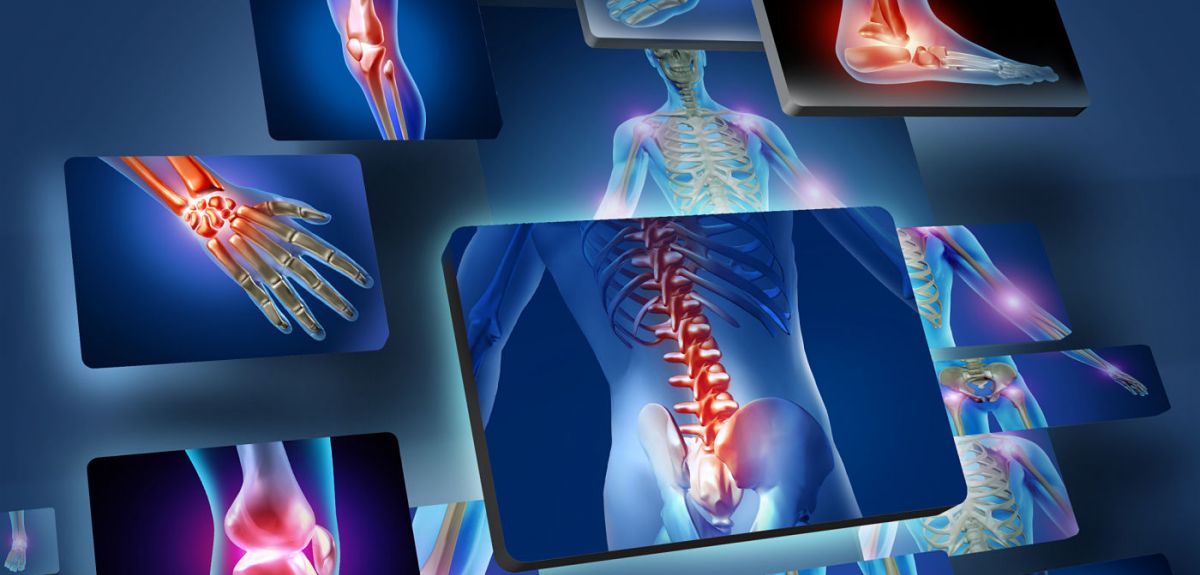
Source: lightspring via Shutterstock
Understanding the genetics of inflammation
The Kennedy Institute of Rheumatology is an international centre of excellence for researching inflammation in the body, from causes to treatments. Professor Irina Udalova is the Institute's principal investigator of the genomics of inflammation. Her latest research has found that a protein known as Interferon Lambda Two (IFN-λ2) could restrict the development of debilitating inflammation, like that found in rheumatoid arthritis.
I spoke to her about the research and what it might mean for people with rheumatic diseases.
OxSciBlog: What are interferons and what do they do?
Irina Udalova: Interferons (IFNs) are a group within the large class of proteins known as cytokines, which are used by the immune system for communication between cells, in particular during microbial infection. They are probably most famous for their ability to interfere with viruses and protect cells from viral infection, but they have other immune functions as well.
OSB: Your latest paper looks at a protein called Interferon Lambda Two (IFN- λ2). What prompted you to look at this particular protein?
IU: We have been interested in the IFN-lambda system and in particular its possible role in inflammation since its original discovery in 2003. Our first venture in to the field was about IFN-lambda gene regulation and production. In 2009 we published a paper describing how the expression of the IFN-lambda 1 gene is regulated in human dendritic cells, which are the main producers of it.
Cytokines are proteins released by cells in response to environmental challenges to communicate with other cells. Interferon lambda is part of the type II cytokine family, which include other interferons, such as IFN-alpha, beta and gamma, but also interleukin 10 (IL-10), a cytokine famous for its anti-inflammatory effects. Interferon lambda has structural similarities to both IFN-alpha and beta and IL-10.
We have always hypothesized that being related to IL-10, IFN-lambdas may also have anti-inflammatory activity However, progress was hampered by the lack of good antibodies to the receptor and some uncertainty in the field as to what immune cells actually respond to IFN-lambda, making it difficult to detect.
OSB: How did you investigate the effects of IFN- λ2?
IU: We teamed up with the researchers at a firm called Zymogenetics who provided us with mice lacking IFN-lambda receptors – their cells could not be affected by IFN-lambda. The company also supplied recombinant IFN-lambda protein.
We used collagen to induce arthritis in the mice. Known as collagen-induced arthritis (CIA), this is considered to be a gold standard animal model of human rheumatoid arthritis. We either treated the mice with recombinant IFN-lambda at the first sign of arthritis or we left them untreated.
OSB: What were the results?
IU: To our great surprise, the first experiment with IFN-lambda treatment showed a complete reversal: The arthritis was halted and the joints of treated mice remained intact while the untreated mice developed severe inflammation, cartilage destruction and bone erosion.
We did many more experiments figuring out the right doses of the treatments as well as trying to understand how this protection works at the molecular level. It took us a couple of years of going through various possible cell types to find out that the main immune cells targeted by IFN-lambda were neutrophils.
OSB: What are neutrophils?
IU: Neutrophils are the cells in the very beginning of the inflammatory cascade. They recognise tissue injury or pathogens and begin digesting and destroying the invading microbes. They also send signals to other cells of the immune signal to come aboard, thus leading to a cascade of further immune reactions.
The role of neutrophils in chronic inflammatory diseases have been somewhat understudied as they are believed to have a very short life span. However, recent evidence suggest that they may live for much longer if activated and they contribute to shaping the immune response and associated effects on the body. In some other models of experimental arthritis, removing neutrophils prevents the disease.
IFN-lambda seems to prevent neutrophils moving to the site of inflammation, without significantly affecting their numbers in the blood. This is important, as it indicates the lack of toxicity and adverse effects.
OSB: What’s next?
IU: We do not know the exact molecular mechanisms behind these events. We plan to investigate those as well as examine other known properties of neutrophils and how treatment with IFN-lambda affects those.
Our immediate focus is on rheumatoid arthritis and other rheumatic diseases where neutrophils play a part in disease development, such as vasculitis or gout.
Also most of our work has so far been done in a model system. We would like to validate the findings in human neutrophils and explore the possibility of re-purposing IFN-lambda (which is now in clinical trials for hepatitis C treatment) for inflammatory diseases.